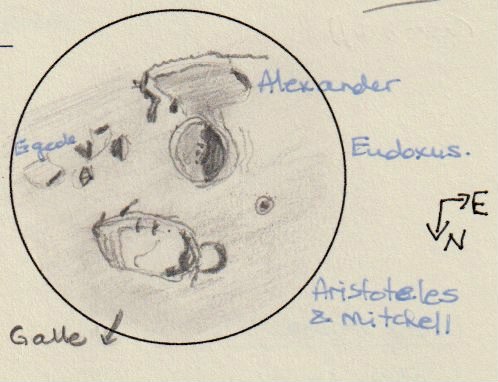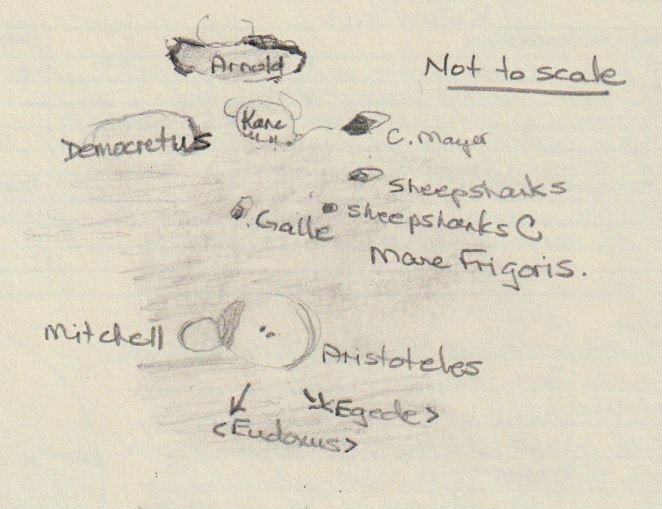IWLOP #048 - Aristoteles & Eudoxus
Spectacular pair of craters located at the edge of Mare Frigoris, the "Sea of Cold." These two prominent craters can be easily identified using binoculars.
Location: 50.2 N 17.4 E Origin: Impact Size: 87 km (Aristoteles), 70 km (Eudoxus) Rukl: 5, 13 Type: Complex Crater (CC)
Objects: Aristoteles, Eudoxus, Mare Frigoris, Egede, Galle, Sheepshanks, Sheepshanks C, C. Mayer, Arnold
Others Identified: Democritus, Kane
Location: Home
Date: 2019-04-11
Time: 10:24 PM ADT
Equipment: 10" Meade SCT, 10 mm eyepiece
Magnification: x250
Seeing: Very Good (4)
Transparency: Excellent (5)
R1: East wall of Aristoteles was especially terraced. Could see a circular pattern near the shadows on the west wall.
R2: Eudoxus is a deep crater with steeply terraced walls and a central peak.
R3: Aristoteles crater walls are not as tall as those of Eudoxus and its floor was smooth. Eudoxus had steeper walls and showed rises in the floor and small craters; its ejecta field is also smaller. In comparison, Tycho is higher-sided and has a much larger ejecta field and rays.
R4: Egede looked diamond-shaped and well flooded. Mitchell was quite shallow and its west wall impacted by Aristoteles. Galle was north of Aristoteles in Mare Frigoris and appeared quite shallow.
C1: The 2 peaks in Aristoteles were observed; the multiple central uplifts in the floor of Eudoxus were noticed.
C2: The 4 secondary craters were located. Sheepshanks and the much smaller Sheepshanks C were north across Mare Frigoris from Aristoteles. Mayer was just north of Sheepshanks. I looked west from Mayer to Kane and then NW from there to observe Arnold, a shallow elongated crater with an irregular north wall.
 |
 |